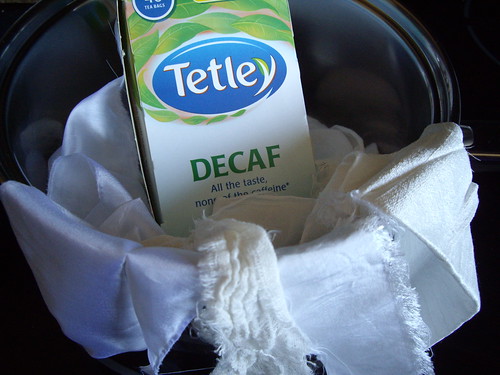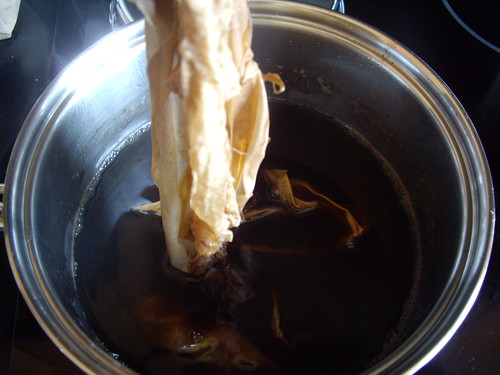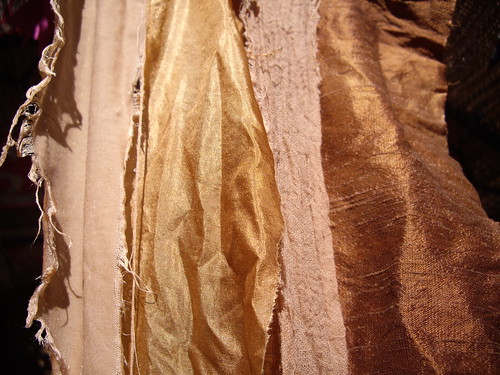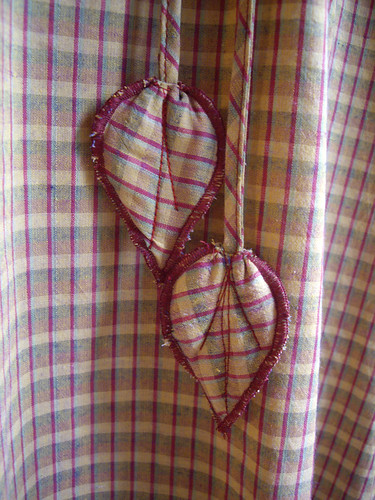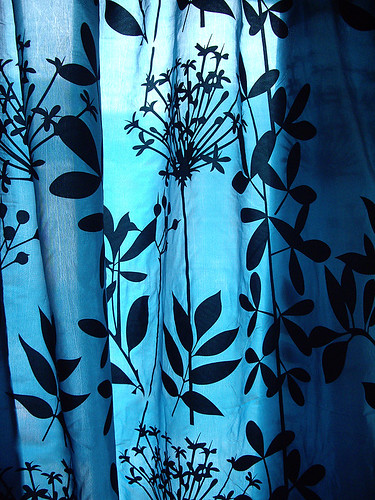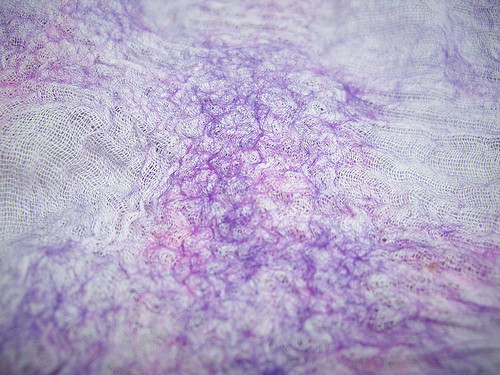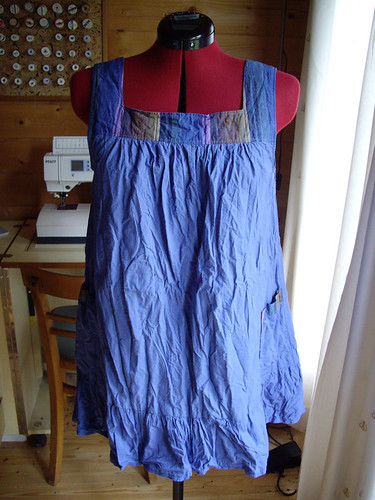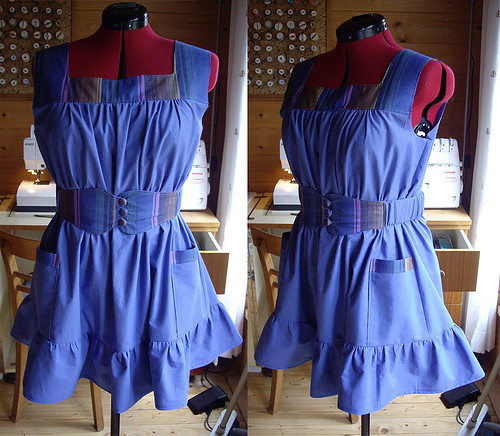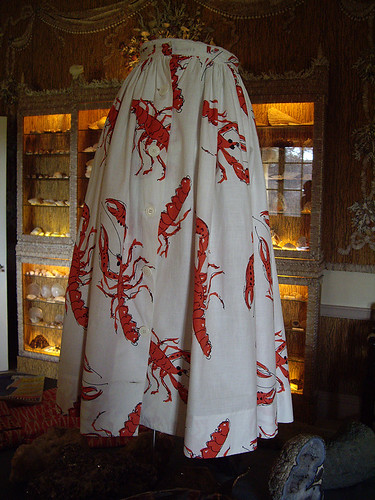Here’s my latest order from my lovely organic cotton people. Three metres each of spotty and plain organic cotton and bamboo blend. Isn’t it lovely? It’s in the washing machine at the moment, and I’m expecting it to be super soft when it comes out. The almost-matching thread’s organic too, and I’m planning to buy a lot more of this in future.
When the pattern eventually turns up in the UK, I’m going to turn it into Simplicity 1755. I might have let out a little squeal when I saw this dress. It’s everything I usually look for in a vintage pattern – cute collar, raglan sleeves, full skirt, pockets… but in a modern size, which means I don’t have to wear terrifying underwear or spend days re-drafting the pattern only to discover that it still doesn’t fit. Marvellous!
The sample swatches are Texweave, which is a lovely heavyweight woven fabric, perfect for coats or upholstery, and Super Jersey, which is another cotton/bamboo blend. It really does feel super too, so soft, and with just enough elastane to make sure it doesn’t go baggy. I can feel some lovely soft pyjamas coming on, or perhaps a vest or two.
I have a lovely big tin full of their fabric samples now – every time they bring out something new I send off for the samples straight away. This means that any time I want to go fabric shopping, I can simply pull down the tin and look at all the little squares. Much easier than just picking something at random from the website and hoping for the best!


